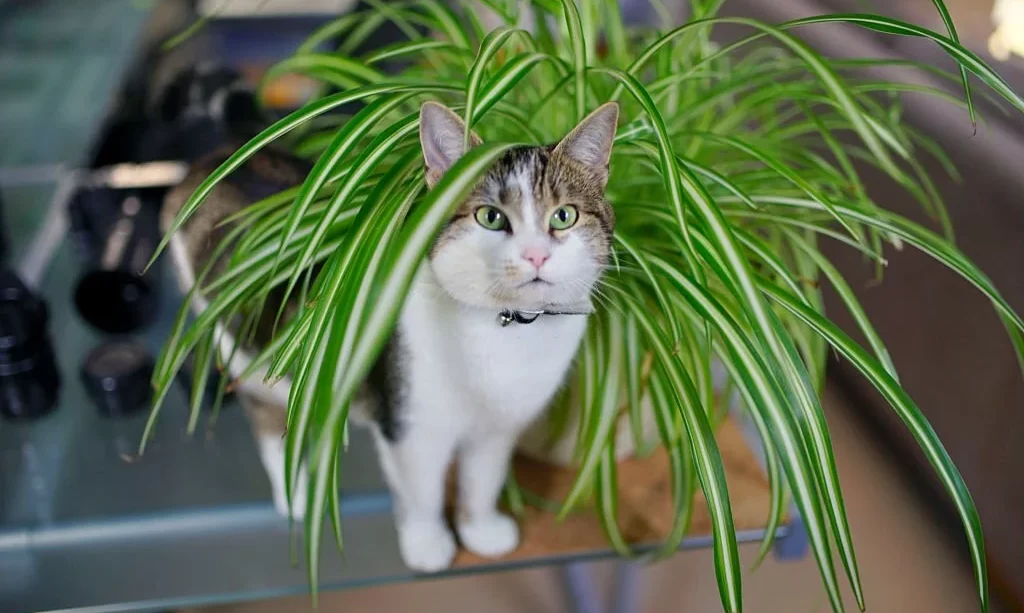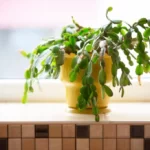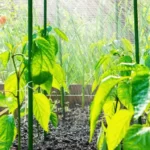Spider plants (Chlorophytum comosum) are well-loved houseplants appreciated for their elegant, arching foliage and air-purifying qualities. With their striking appearance and relatively easy care requirements, spider plants have become a popular choice for indoor greenery. However, for cat owners, a common question arises: can cats eat spider plants without harm? In this article, we will explore the nature of spider plants, their appeal to cats, and whether these beloved houseplants pose any risks to our feline companions. By gaining a deeper understanding of spider plants and their interaction with cats, you can ensure the safety and well-being of both your plants and your curious four-legged friends.
- Homegrown by jmbamboo
- Great gift for the home, apartment, office, dorm or den
- Prefers bright, indirect light or artificial light
- Keep evenly moist, not wet or dry 3 pack.
- Keep evenly moist, not wet or dry
Spider Plant Overview
Spider plants, scientifically known as Chlorophytum comosum, are known for their distinctive appearance and ease of care, making them a popular choice for indoor gardening enthusiasts. Here’s a closer look at these captivating houseplants:
- Distinctive Foliage: Spider plants are characterized by their long, slender leaves that arch gracefully outward from a central point, resembling the legs of a spider, hence their name.
- Varied Varieties: There are different varieties of spider plants, with variations in leaf color and patterns. The most common variety features green leaves with white stripes, but others may have solid green leaves or different stripe patterns.
- Air-Purifying Qualities: Spider plants are renowned for their air-purifying properties. They can help remove certain indoor pollutants, making them a popular choice for improving indoor air quality.
- Ease of Care: Spider plants are often favored by both beginner and experienced plant enthusiasts due to their relatively low maintenance requirements. They thrive in indirect sunlight, moderate watering, and well-draining soil.
- Propagation: Spider plants are prolific producers of “pups,” which are miniature versions of the parent plant. This makes them an excellent choice for propagating and sharing with fellow plant enthusiasts.
As captivating as spider plants are, their unique appearance and the way their leaves sway in the breeze can pique the interest of curious cats. In the sections that follow, we will delve into whether spider plants are safe for feline companions and what precautions cat owners should take when keeping these plants in their homes.
The Attraction for Cats
Cats are naturally curious creatures with an innate attraction to greenery. When it comes to spider plants, several factors contribute to their appeal for feline companions:
- Visual Intrigue: The long, arching leaves of spider plants can captivate a cat’s attention. Cats are visually oriented animals, and the movement of the leaves, especially when a gentle breeze or a playful paw nudges them, can be irresistible to our curious feline friends.
- Texture and Playfulness: Cats are tactile creatures, and the texture of spider plant leaves can be enticing. Cats may enjoy batting at or nibbling on the thin, ribbon-like foliage, which can provide them with a source of entertainment.
- Natural Instincts: In the wild, cats often chew on grasses and plants as a way to aid digestion or to expel hairballs. This natural behavior can extend to indoor plants, including spider plants, as a form of self-soothing and a means of maintaining their health.
- Homegrown by jmbamboo
- Great gift for the home, apartment, office, dorm or den
- Prefers bright, indirect light or artificial light
- Keep evenly moist, not wet or dry
- 3 plants
Are Spider Plants Toxic to Cats?
One of the foremost concerns for cat owners is whether spider plants are toxic to their feline companions. Here’s what you need to know:
- Generally Non-Toxic: Spider plants are widely considered non-toxic to cats. They do not contain substances known to be highly poisonous to felines, making them less of a concern compared to some other houseplants.
- Individual Variability: It’s important to note that while spider plants are generally safe, individual cats may react differently. Some cats may chew on spider plant leaves without any apparent ill effects, while others may experience mild gastrointestinal upset.
- Moderation Is Key: Even though spider plants are not highly toxic, it’s best to discourage excessive consumption. Frequent nibbling on the leaves can still lead to stomach upset in some cats. Therefore, it’s advisable to monitor your cat’s interactions with spider plants.
Potential Risks and Concerns
While spider plants are considered non-toxic to cats, there are still some potential risks and concerns associated with cats nibbling on these houseplants:
- Gastrointestinal Upset: Cats that consume spider plant leaves, especially in large quantities, may experience mild gastrointestinal upset, including vomiting or diarrhea. These symptoms are typically temporary and resolve on their own.
- Irritation: The sap of spider plants can sometimes cause mild irritation if it comes into contact with a cat’s skin or mucous membranes. This is more likely to occur if a cat chews on the plant and breaks the leaves.
- Preventive Measures: To minimize potential risks, cat owners can take preventive measures such as placing spider plants out of their cat’s reach, using cat deterrents around the plants, or providing alternative sources of entertainment and stimulation for their pets.
While spider plants are generally considered safe for cats, it’s essential to exercise caution and monitor your cat’s behavior around these plants. Understanding your cat’s unique preferences and tendencies can help you create a safe and harmonious environment for both your beloved pet and your cherished houseplants.
Monitoring and Preventive Measures
To ensure the well-being of your cat and the longevity of your spider plants, proactive monitoring and preventive measures are essential:
- Observation: Keep a watchful eye on your cat’s behavior around spider plants. If you notice excessive chewing or nibbling, it may be time to take action.
- Placement: Position spider plants out of your cat’s easy reach. Consider placing them on high shelves, using hanging planters, or designating certain areas as “cat-free zones”.
- Cat Deterrents: Employ cat deterrents, such as pet-friendly sprays or mats, around your plants. These products can discourage cats from getting too close to your spider plants.
- Alternative Distractions: Provide your cat with alternative sources of entertainment and stimulation. Catnip, cat grass, and interactive toys can redirect their curiosity away from your plants.
Safe Alternatives and Indoor Plants for Cats
If you’re concerned about your cat’s interactions with spider plants or simply want to ensure their safety, consider incorporating these cat-friendly indoor plants into your home:
- Catnip (Nepeta cataria): Catnip is a well-known favorite among felines. Its fragrant leaves can provide hours of amusement for your cat.
- Cat Grass (Dactylis glomerata): Cat grass is safe for cats to chew on and can serve as a natural source of dietary fiber, aiding digestion.
- Spider Plant Varieties: If you still wish to enjoy spider plants but are worried about your cat, consider spider plant varieties with solid green leaves. While these are less visually stimulating for cats, they are still considered non-toxic.
- Safe Indoor Plants: Explore other non-toxic indoor plants that are known to be safe for cats. Some options include Boston ferns (Nephrolepis exaltata), Areca palms (Dypsis lutescens), and African violets (Saintpaulia spp.).
- Catnip Basics – Catnip, or Cat Nip is a perennial flowering herb that targets your cats “Happy” receptors in the brain. One whiff and your cat will be rolling, flipping, rubbing and zoning out. It is the purrrfect cat toy.
- Indoors / Outdoors – Grow your own Catnip plants for cats indoors or outdoors. The plants grow fairly simply and are easily maintained in both garden spaces. Sow indoors or sow right outside.
- Growth – These herbs will grow to a mature height of roughly 18 to 24 inches tall and can easily spread about 18 inches wide. Grow them alongside Catmint as well!
- Quality – All Catnip seeds packaged by Seed Needs are intended for the current and the following growing seasons. All seeds are stored in a temperature controlled facility that is free of significant amounts of moisture.
- Quantity – Seed Needs offers generous quantities. You can share with friends and family, or you can save the extra seeds until the following season, if properly stored.
Conclusion
In conclusion, spider plants are generally considered safe for cats, as they are not highly toxic and do not contain substances known to be harmful to feline companions. However, individual cats may react differently, and some might experience mild gastrointestinal upset if they consume spider plant leaves.
To create a harmonious living environment for both your cat and your plants, it’s advisable to exercise caution and take preventive measures. Monitor your cat’s behavior around spider plants, position them out of reach, use cat deterrents, and provide alternative sources of entertainment.
Remember that while houseplants can be a delightful addition to your home, your cat’s health and safety should always be a top priority. By understanding your cat’s unique needs and preferences, you can ensure a happy and healthy coexistence between your feline friend and your cherished indoor greenery.






